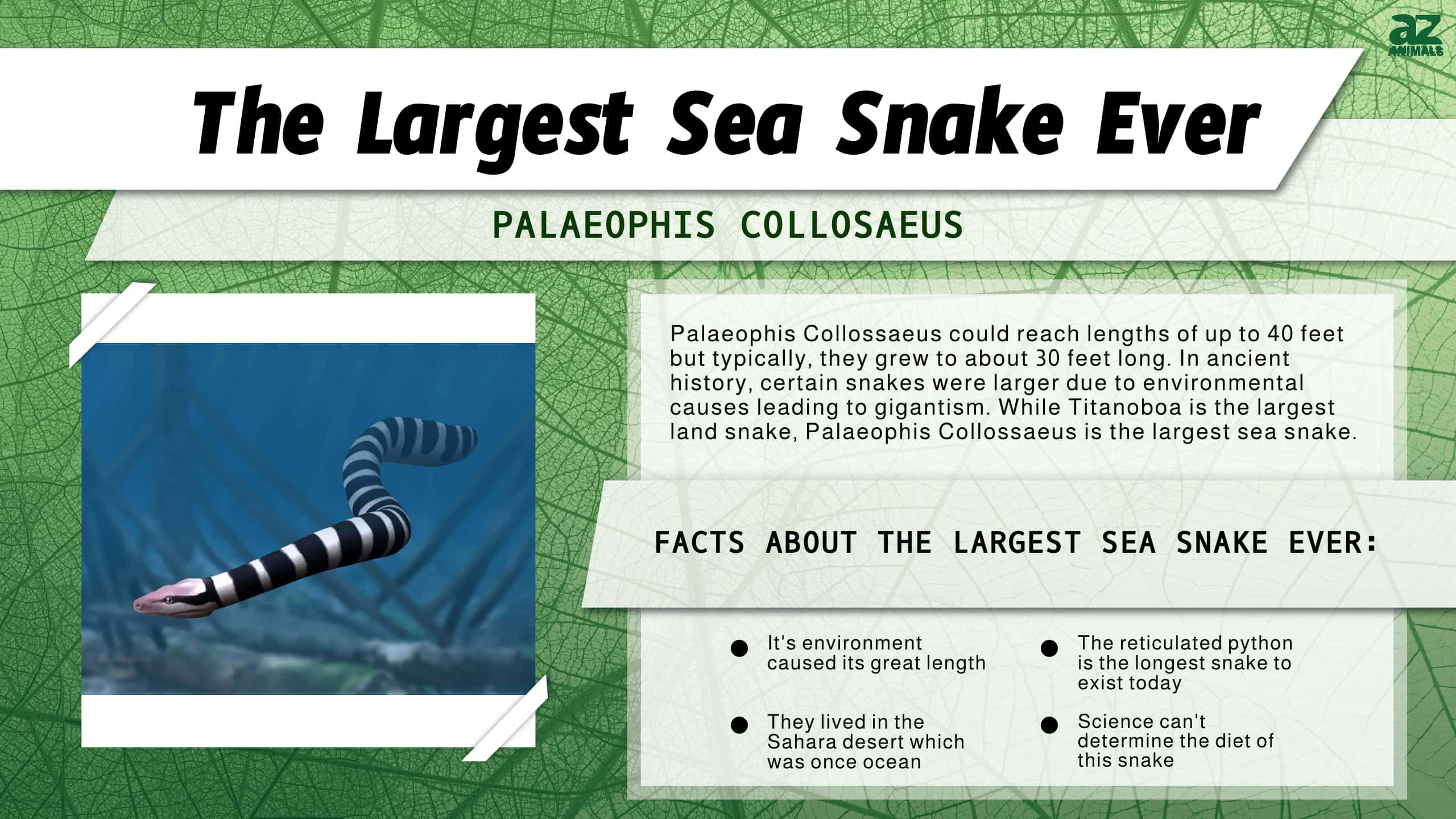
Back in 1999, a team of international scientists began work in the Sahara desert in northern Africa.
They were looking for evidence of something not seen in the arid lands of Nigeria, Mali, and Algeria in over 50 million years: an ocean. This ancient ocean was home to more than fish; it was the personal hunting ground of the largest sea snake ever, Palaeophis colossaeus.
Using fossil analysis, scientists have discovered that the ancient Trans-Saharan Seaway was home to even more gigantic species. And they think they know why so many monster creatures inhabited this strange, ancient ocean.
Let’s take a closer look at the largest sea snake ever, and discover how it got so big. To do that, we’ll need to know more about colossaeus’s home, what it might have eaten, and how it would have killed its prey.
How Big Was the Largest Sea Snake Ever?
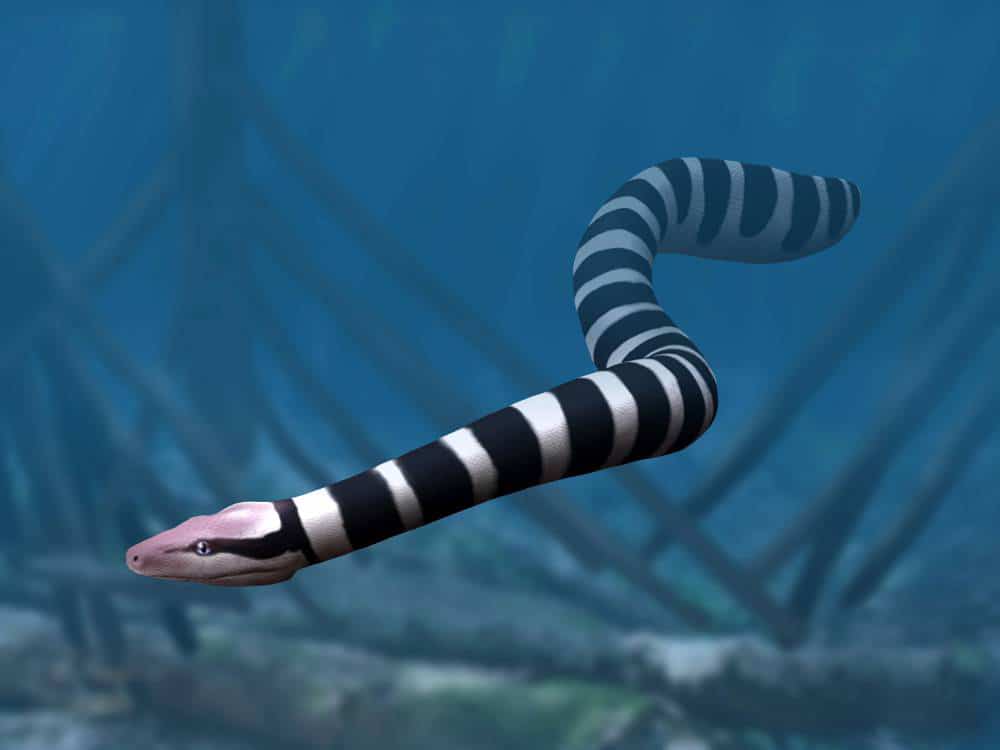
Palaeophis collossaeus could grow up to 40 feet long.
©Nobu Tamura (http://spinops.blogspot.ca/) / Creative Commons – License
Palaeophis collossaeus could grow up to 40 feet long.
Snakes were bigger in the past, or, at least, some snakes were bigger. This is especially true for the species known as palaeophis collossaeus, an ancient type of sea snake. Under normal conditions, these snakes grew to around 30 feet long. That’s still bigger than any snake alive today! But, in the Trans-Saharan Seaway, collosaeus grew even larger.
According to the scientists that authored the study, “The Trans-Saharan Seaway exhibited intermittent isolation from major seas. This environmental variable may have created aquatic centers of endemism, stimulating selection for gigantism as previously observed for species on terrestrial islands.”
In layman’s terms, scientists believe that the periodic isolation of the creatures living in the Seaway paved the way for them to grow to gigantic proportions. For collosaeus, this meant growing up to 40 feet long, making it one of the largest snakes ever.
What is the Longest Living Snake?
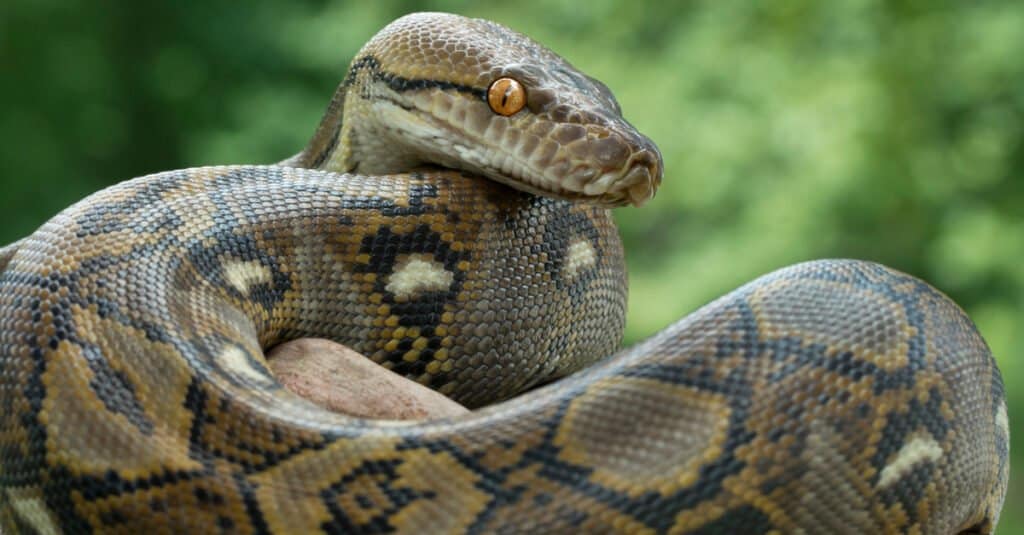
The reticulated python is native to Southeast Asia and can grow 30 feet long. They are now an invasive species in the southern U.S.
©Mark_Kostich/Shutterstock.com
The modern snake that holds the title of being the longest is the reticulated python (Python reticulatus). This species can grow up to an incredible 30 feet in length, although most individuals average around 20 feet long. The reticulated python is native to Southeast Asia and can be found in a variety of habitats, from rainforests to grasslands.
One of the reasons why the reticulated python is so long is its ability to continue growing throughout its entire life, as long as it has access to food and other resources. This means that older individuals can reach truly impressive sizes, and have been known to weigh over 300 pounds. These snakes are also known for their striking appearance, with a pattern of interlocking scales that creates a beautiful mosaic of browns, blacks, and yellows.
While the reticulated python is an impressive and awe-inspiring creature, it is important to remember that these snakes can be dangerous to humans. They are one of the few species that have been known to attack and eat people, although such incidents are rare. As with all wildlife, it is important to respect these animals and observe them from a safe distance.
Where Did Collosaeus Live?

The Sahara desert, which was once an ocean, is now filled with sand.
©Anton Petrus/Shutterstock.com
If you walk around the Sahara desert today, you would never know that it used to be home to an ancient, 165-foot-deep ocean channel. But, the locals will tell you that finding fossilized marine shells is not uncommon. That’s because, between 50-100 million years ago, a great seaway bisected the land from north to south and covered the entire northern boundary of the Sahara.
Within this Seaway, large predators like giant catfish, sharks, and ancient crocodiles, hunted. The largest sea snake ever had plenty of hunting grounds to choose from; the ocean supported deltas, shoals, and lagoons of all kinds. Scientists believe that collosaeus was entirely (or almost entirely) aquatic and would have spent its life in the 1,800 square miles Trans-Sahara Seaway.
But, the water isn’t the only thing that was different in the ancient Sahara. According to the story in the rocks, the lands surrounding this ocean channel were filled with verdant forests. These lush woodlands may have given way to mangrove swamps leading to the open ocean—the perfect place for the largest sea snake ever to hunt.
What Did the Largest Sea Snake Ever Eat?
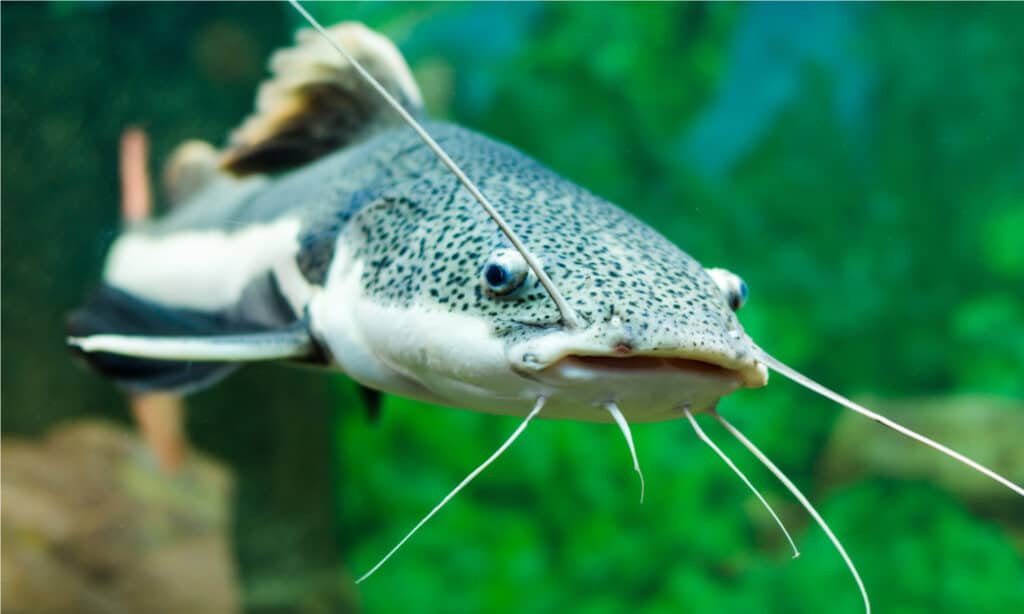
The largest extant snakes can eat prey as large as catfish.
©Bk87/Shutterstock.com
Collosaeus measured around 40 feet long, long enough to prey on large creatures. But, scientists aren’t sure whether the structure of its skull allowed it to consume creatures bigger than its own head, as many of today’s snakes do.
Why aren’t scientists able to tell? Because the only fossilized remains of the largest sea snake ever don’t include skull bones. However, scientists hypothesize that collosaeus would have been similar to today’s boas, which can eat prey many times the size of their heads.
So, if the largest sea snake ever could eat giant foods, just what did it eat? Well, in a land of gargantuan swimmers, there were plenty of choices. Collosaeus lived alongside the largest ever catfish in Africa, which would have made an excellent meal. These giant snakes also would have eaten large sharks, bony fish, ancient crocodiles, and big turtles.
For the largest sea snake ever, very few creatures would have been off the menu.
How Did Collosaeus Hunt?
If collosaeus was big enough to eat giant catfish and sharks, just how did it hunt? Scientists can’t be sure, but there are two definite possibilities. The first is that the largest sea snake ever was venomous. A venomous giant snake would have bitten and envenomated its prey, then waited for it to die before swallowing it whole.
The other option is that collosaeus constricted its prey, like modern-day boa constrictors. If this were the case, then this giant sea snake would have wrapped itself around the bodies of its prey and literally squeezed the life out of them.
What is certain about collosaeus is that its heavy, narrow body was designed for swimming. So, however, they hunted, they likely hunted in the water. Their size, coupled with their carnivorous diet, would have made them an apex predator in the waters of the Trans-Saharan Seaway.
Which Was Bigger: Titanoboa, or Collosaeus?
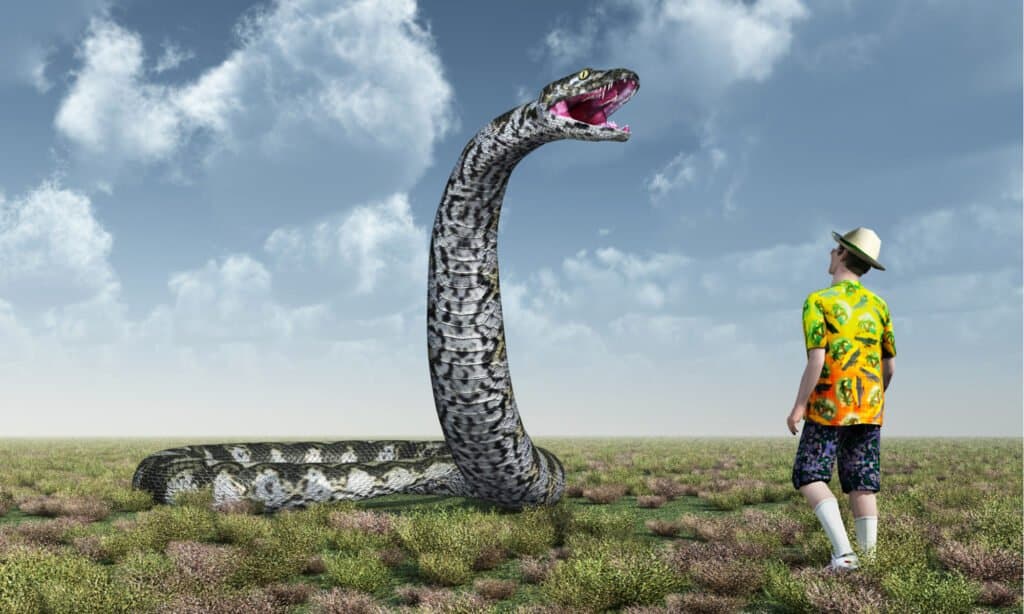
The largest snake ever found is the Titanoboa, which lived in ancient South America.
©Michael Rosskothen/Shutterstock.com
Collosaeus may be the largest sea snake ever, but is it the largest snake to ever live? Even with its tremendous length of up to 40 feet, collosaeus still doesn’t beat out the largest snake ever, Titanoboa.
Titanoboas is thought to have stretched up to 50 feet long, making it bigger than the monstrous collosaeus’s of the Trans-Saharan Seaway. Like the largest sea snake ever, the titanoboa lived millions of years ago and would have preyed on giant-sized prey.
So, collosaeus may be the largest sea snake ever, but it’s still only the second-largest snake to ever live.
Other Colossal Creatures of the Eocene
If you’re curious about other megafauna living at the same time these sea snakes did, here are a few:
- Chalicotherium – unclassifiable
- Moropus – unclassifiable
- Coryphodon – half-ton herbivore
- Hyaenodon – considered ancestral to dogs
- Andrewsarchus – terrestrial carnivorous mammal
Other Record-Breaking Snakes
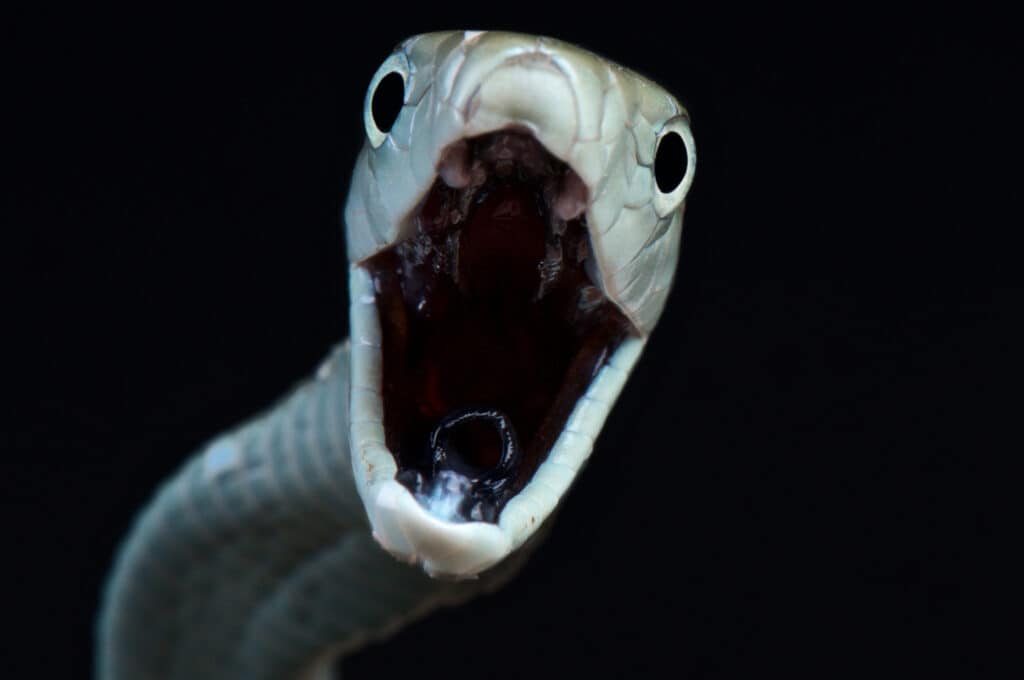
The black mamba is one of the most venomous snakes in the world and is feared for its large size and aggressive behavior.
©reptiles4all/Shutterstock.com
Some scientists believe that snakes like the prehistoric Titanoboa grew to gigantic proportions because the temperature of the earth was hotter – just as the tropic-dwelling boas and pythons of today are larger than other snakes. If you are interested in a modern-day monster snake that terrorizes animals and humans alike in the African sub-Sahara, look no further than the notorious black mamba!
Black mambas are one of the most venomous snakes in the world and can grow over 12 feet in length and move at speeds of up to 12.5 mph. In spite of their name, the black mamba is seldom black. Their colors range from yellow-brown, light tan, olive, and gunmetal grey which can reflect a purple hue. Their open mouths reveal a terrifying black cavernous void and an inky black tongue. Black mambas will hiss loudly and spread its neck into a hood before it stands like a cobra and unleashes a series of potentially deadly strikes. Whenever this snake hunts – it waits on the venom to paralyze its victim and then swallows the animal whole.
So, how long is the largest black mamba? It’s over 14 feet in length! Read the next post to find out exactly how large – and then ponder the possible existence of a monster mamba in a world where global warming reaches the point of no return.
The photo featured at the top of this post is ©
Discover the "Monster" Snake 5X Bigger than an Anaconda
Every day A-Z Animals sends out some of the most incredible facts in the world from our free newsletter. Want to discover the 10 most beautiful snakes in the world, a "snake island" where you're never more than 3 feet from danger, or a "monster" snake 5X larger than an anaconda? Then sign up right now and you'll start receiving our daily newsletter absolutely free.
Thank you for reading! Have some feedback for us? Contact the AZ Animals editorial team.






